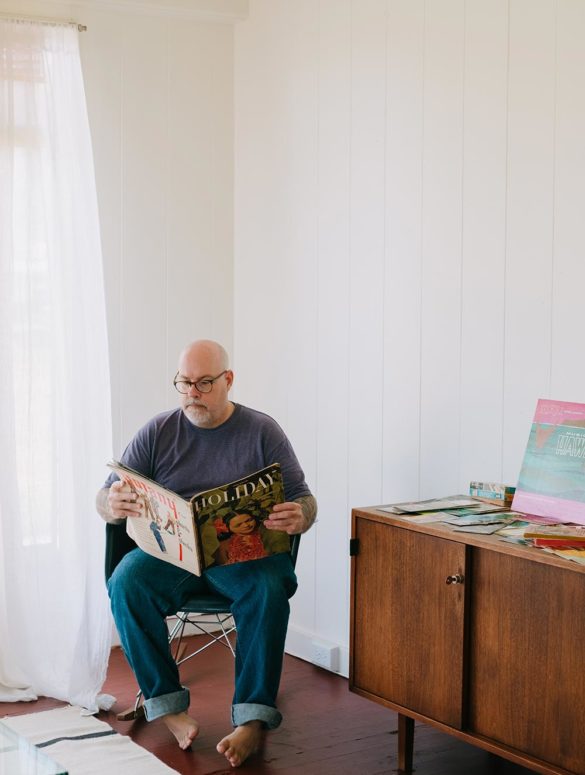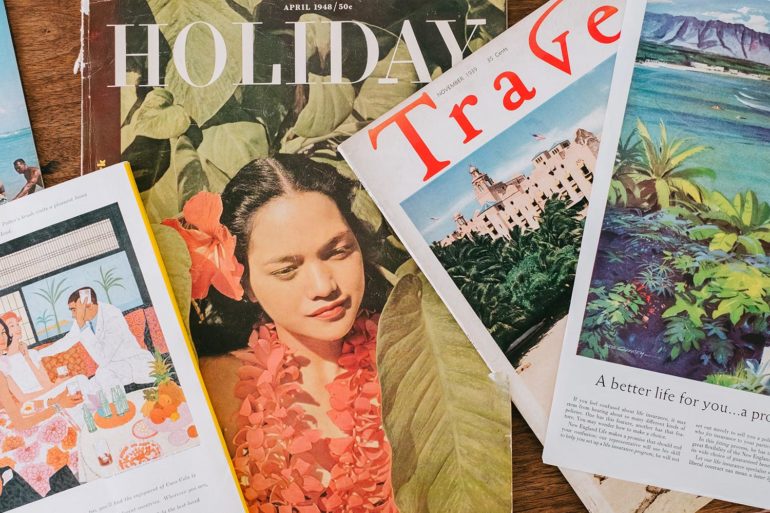There’s always something the collector wants but doesn’t have, never mind all the things the collector would want but hasn’t yet seen. In the case of Spencer Tolley, he began searching out vintage Hawai‘i ephemera in 2012, when work as a travel agent brought him from Miami to the Wai‘anae coast of O‘ahu.
“I’ve been a collector of things all my life,” says Tolley, whose pursuits include first-edition books, midcentury housewares and furniture, and postcards of New York City’s Rockefeller Center. “Collecting postcards has been a constant.”
Postcards also played a part in shaping Hawai‘i’s reputation as a paradise of the Pacific. Local companies like Hawai‘i and South Seas Curio Co.; Wall, Nichols and Co.; and Island Curio Co. produced lithographic postcards that played up Hawai‘i’s sensuousness, its traditional and regal cultures, its landmarks and landscapes.
Tolley is especially interested in locally produced cards from 1901 to 1907, the first time in U.S. Postal Service history when private companies could print postcards. Sites like eBay, where Tolley has maxed out his watchlist, make finding these antiques much easier, though sellers are more educated now.
Hunting down postcards has also helped Tolley learn about his new home and entertain folks online. As his collection grew, he began sharing his finds on Instagram under the name @fotoaloha. Through the account, Tolley has cultivated a vision of the islands he refers to as the golden age of Hawai‘i travel, between the turn of the 20th century and 1941, when the United States entered World War II.
It’s not only about places tourists care about. It’s about the lives of people who live here now, or were stationed here during World War II, or during the Korean War—anyone who’s crossed paths with Hawai‘i.
In this phase of its tourism history, Hawai‘i was a hard-to-reach and expensive destination. Seats aboard Matson luxury liners and propeller planes headed to the islands were reserved for the well-heeled and adventurous.
According to Tolley, ’60s jet travel and mass-marketed tourism brought that era to a close, though Hawai‘i continued to attract visitors looking for an exclusive place of retreat, isolation, and freedom through the 1950s.
“I try to think about what will be most meaningful and exciting and focus on the places that are mostly gone,” Tolley says about how he curates the Instagram account. He strives to strike a balance in what is presented rather than focusing solely on the hospitality-industrial complex.
“It’s not only about places tourists care about,” he says. “It’s about the lives of people who live here now, or were stationed here during World War II, or during the Korean War—anyone who’s crossed paths with Hawai‘i.” Tolley is always adding to his collection and posting new items to @fotoaloha on Instagram as he gets things in the mail. And, as he says, it’s never ending.





